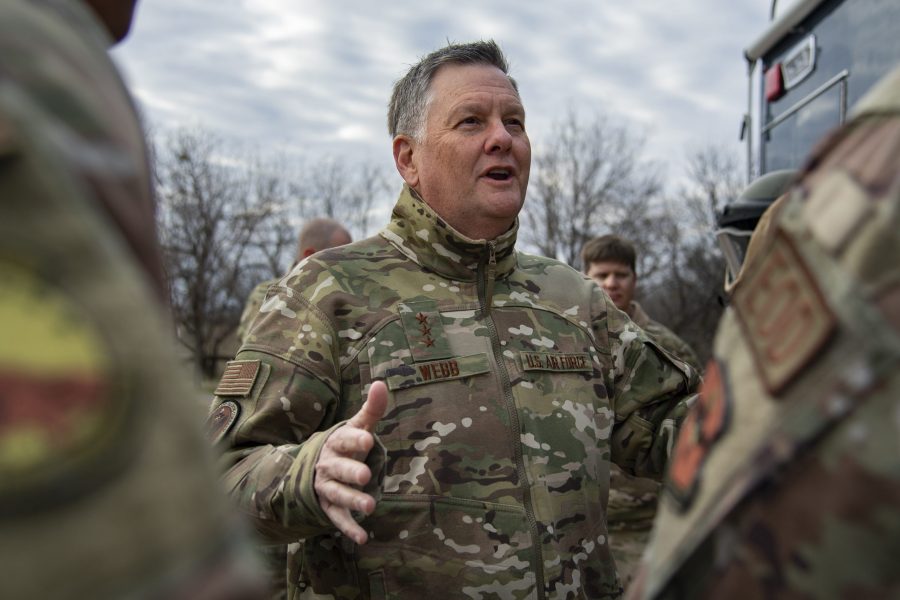While the COVID-19 pandemic has set back Basic Military Training shipping rates, Air Education and Training Command boss Lt. Gen. Brad Webb said April 10 that an Air Force stop-loss order isn’t on the table yet.
“Our assessment is that we don’t have to take other measures, such as stop-loss, which of course has been … discussed inside of Washington. We’re not at that point yet,” he told reporters during a telephonic Pentagon press briefing.
A stop-loss order would let the Air Force keep Airmen on Active duty past their separation dates. “Those affected by the order generally cannot retire or leave the service as long as reserves are called to Active duty or until relieved by the President, whichever is earlier,” the Defense Department wrote in September 2001.
The Washington Times first reported Defense Department COVID-19-related stop-loss considerations on April 7.
Also on April 7, the Air Force started taking in just 460 recruits, significantly below the typical class size of approximately 700. Of those, 400 trainees will go through BMT at Joint Base San Antonio-Lackland, Texas, and 60 will be part of a beta test at Keesler Air Force Base, Miss. This could theoretically yield 1,840 graduates per month—a nearly 39-percent drop from the approximately 3,000 trainees that typically graduate in the same period.
“We had a little bit of cache that you would always expect of a training pipeline …, but we’re going to eat into that the longer that this continues,” he said.
AETC and Air Force leadership will continually evaluate how long the service can proceed without taking more drastic measures to ensure readiness. But Webb emphasized that halting Basic Military Training, even for a short time, could have severe impacts on Total Force readiness.
“If we stand these capabilities down for a month, it will take a year to recover,” he said.
Service leaders have yet to determine “an absolute decision point” at which a stop-loss order would be warranted, said Webb.
If and when the time came to make that call, it would come from the highest levels of USAF leadership, though Webb said he will provide context on training.
For now, AETC is taking the situation “day by day, week by week, to see what we can get done on our end of the pipeline,” Webb said.
As of April 10, just five trainees have tested positive for COVID-19, and none of the instructors have gotten the disease.
“I wouldn’t want to leave you with an impression that this doesn’t affect our ability in any of our pipelines because it does,” he said. “But we are, as elegantly as we can, navigating the risk-to-force and the risk-to-mission kind of aspects of keeping after readiness, to the extent that we can.”
